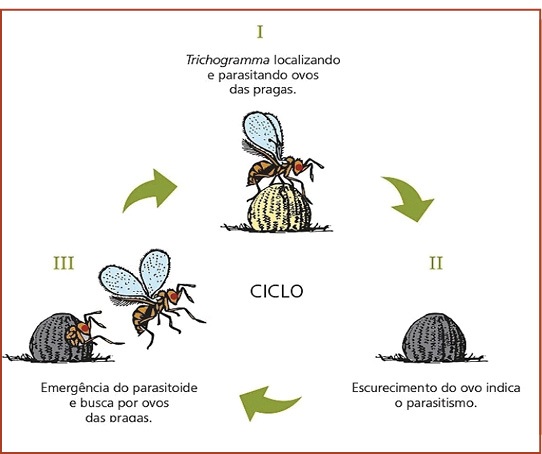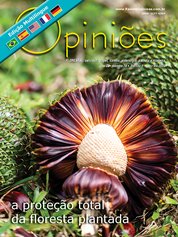Eloá Cabrera Machado Mendes
Coordenadora Florestal da RIV-Koppert
OpCP70
Macrobiológicos: novo aliado no controle de lagartas desfolhadoras de eucalipto
Há uma forte demanda mundial por uma agricultura sustentável, sendo o controle biológico um elo importantíssimo dessa corrente. O uso de agentes biológicos no controle de pragas agrícolas vem aumentando em torno de 15% ao ano no mundo, e, no Brasil, esses valores são ainda maiores, crescendo próximo a 30% ao ano. Os resultados recompensam com significativa redução nos custos de produção, aumento de produtividade e facilidade operacional, além de todos os benefícios socioambientais.
Efetivamente, foi o salvo conduto ao prolongar a vida útil da grande maioria das moléculas químicas e manutenção dos organismos benéficos nas áreas de produção. No sistema MIP – Manejo Integrado de Pragas, tanto os agentes químicos quanto os biológicos, características genéticas da praga e do hospedeiro, resistência, aspectos comportamentais e ambientais,tecnologia de aplicação, entre outros fatores, são utilizados como ferramentas no manejo e controle de pragas. Quanto mais informações, melhor a tomada de decisão e melhor será o resultado. A chave do sucesso está no monitoramento, que define o momento correto da aplicação de cada tecnologia, de acordo com a fase da cultura e da praga.
Sem monitoramento e disponibilidade das informações de forma rápida e assertiva, não há MIP. Foi pensando nisso que fizemos uma “megaoperação”, no ano passado (2021), para o controle de lagartas desfolhadoras do eucalipto. Houve ataque e desfolha massivo em mais de 1 milhão de hectares de florestas plantadas, só no Mato Grosso do Sul. Foram identificadas como possivelmente pertencentes à espécie Iridopsis panopla, que era, até então, uma praga desconhecida na eucaliptocultura.
Não havia tempo a perder. Coletamos em campo ovos, mariposas e lagartas e enviamos tudo ao nosso laboratório de P&D, com sede na Koppert, em Piracicaba, onde reúne os principais especialistas do controle biológico no mundo.
Embasados nos trabalhos e conhecimento dos professores José Roberto Postali Parra da Esalq-Piracicaba, Fabrício Fagundes Pereira da UFGD-Dourados, Carlos Frederico Wilcken da Unesp-Botucatu, entre outros pesquisadores, ficam aqui registrado nossos sinceros agradecimentos.
Houve um retorno muito positivo do nosso laboratório sobre o parasitismo dos ovos de Iridopsis sp. pelo Trichogramma pretiosum, fato de grande importância, uma vez que o parasitismo do Trichogramma sp. ocasiona redução drástica da eclosão de lagartas e pressão da praga no campo. O Trichogramma pretiosum é uma microvespa, e suas fêmeas localizam no campo os ovos do hospedeiro e, neles, depositam seus ovos, interrompendo o desenvolvimento da praga logo no início do seu ciclo, tornando-os de coloração escura, dando origem a novas vespas, ao invés de lagartas. Esse processo demora de 7 a 12 dias, dependendo da temperatura do ambiente.
Sem as lagartas, não ocorre o dano, uma vez que apenas ovos e mariposas não reduzem diretamente a área foliar, e, o mais importante, a praga não completa seu ciclo.
Uma solução de sucesso altamente empregada na cultura da cana-de-açúcar para o controle da broca, Diatraea saccharalis: anualmente, mais de 1,5 milhão de hectares da cultura são tratados com essa tecnologia.
Aproveita-se o know-how nas áreas de cana e os serviços prestados com drones especialmente adaptados para aplicação de macropasitoides em extensas áreas pela Natutec, empresa que opera no segmento de aplicação via drone na América Latina.
Foram inoculados os Trichogrammas pretiosum em mais de 100 mil hectares de florestas plantadas, em quatro meses de operação, incorporando essa importante ferramenta ao MIP das empresas florestais. Os resultados puderam ser refletidos neste ano (2022), quando a ocorrência da praga e seus danos foram mínimos.





